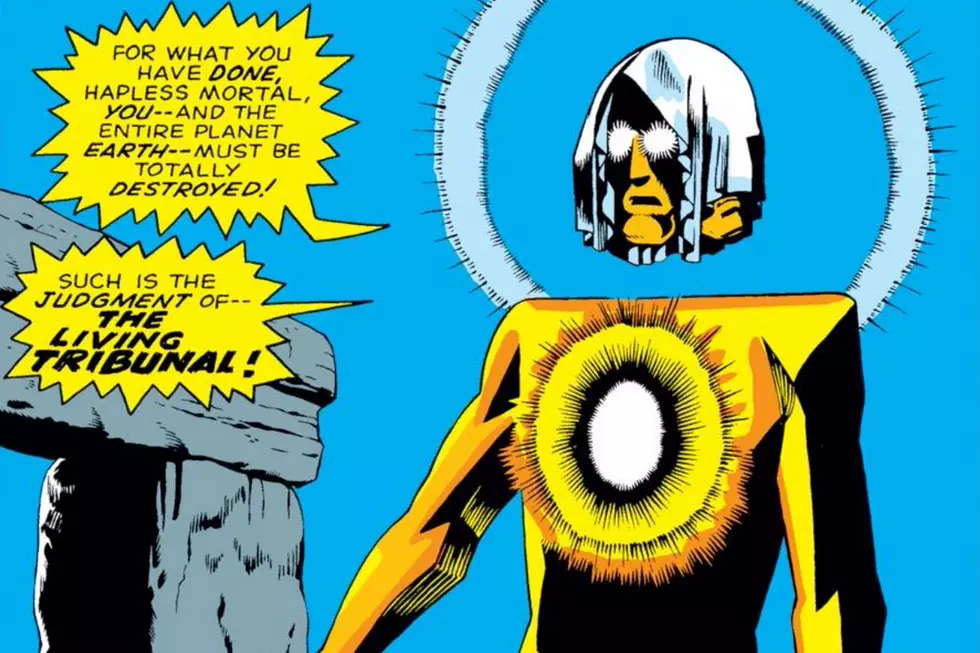
Strip Panel Naked: The Considered Approach of Tamaki & Leon’s ‘Hulk’
Sometimes when you read a story, something sticks out at you. A page might feel weird, or a layout might seem odd and distracting. It could be that it's just a bad choice on the team's part in figuring out the approach to tell the story, or it could be an example like in the new Hulk book where it's very deliberately done for effect.
Mariko Tamaki and Nico Leon have a very specific visual style for the majority for the book. It's not that it's simple, but there's an obviousness to it. It looks like comics. Some panels overlap, but there's a standard structure that doesn't look too unusual. Everything works on columns and rows, and it's fairly regimented.
It all breaks apart in a scene with Jen in the lift.
Before we get to that, take a look at the previous pages. You can see the structure in place, the three rows, white gutters. Those two pages together look like they match, and work within the same world. It uses a similar combination of width length and thinner panels.
So when we get to the next page, immediately from the first panel you can see something is different. The panels start to slide, and the density goes up.
In the top half, the visuals themselves remain fairly standard, but the playfulness with the way the panels sit, and the fading vertical lines indicate something is happening. Leon really amps up the looseness by using that mirroring in the lift on the left side to create an odd sense of unease, which uses that left to right line to pull you into the madness of the rest of the layout.
By pulling you across right, you end up hitting that number 1 on the far side, pulling you down with these moments of Jen trying to restrain herself from "Hulking out", and Tamaki and Leon use the numbers to guide you up and down and left and right. It's great because it eschews the natural progression of the more simple Z-curve that the majority of the rest of the comic follows. Instead it goes left to right, down, over to a mini-Z-curve, and then across. It's more adventurous and playful --- because it needs to be.
I love moments like this, because it's incredibly restrained. This comes more than half-way into the comic, and so to make this moment work, Leon, Tamaki and the team have to hold a more steady pace, and keep the layouts cleaner and leaner until this moment. If they don't, this payoff doesn't work, and this madness won't feel like that; it'll just be "another moment."
If you fill your movie with explosion after explosion, they're going to mean less as it goes on; each one causes a weaker and weaker response. If you save that explosion for the finale, you'll have an easier time wowing the audience.
Impressively, it also speaks of confidence from this team. They've set a tone, and were aware enough to establish it coming out of the gate, and to tell you both the kind of story and the way they're going to tell that story, in one issue. It doesn't re-establish the form --- but it shows you how to use it effectively.
In Strip Panel Naked, Hassan Otsmane-Elhaou looks at elements of the art of visual storytelling on the comics page.
More From ComicsAlliance









